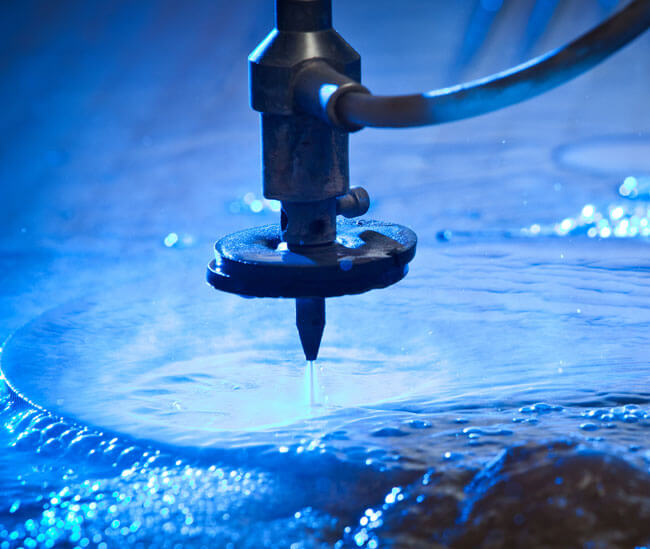Water jet cutting uses a computer controlled machine capable of cutting any sheet of material, the water jet process uses an exceptionally high psi of water which is forced through a very small diameter hole.
The stream of water can cut very detailed and high tolerance parts in all grades of polyethylene foam and even plastics. The fine jet of water avoids any surface pressure as the material is free standing underneath the waterjet cutter and this is now the most effective way of cutting intricate shapes with extremely high tolerances. Water jet cutting is being used more and more with polyethylene foam conversion with it being a precision production method.
Other methods of cutting Polyethylene foam, such as routing, have their limitations. They cannot cut corners without leaving a radius and the smallest slot which can be cut would be 3mm, and only at a small depth due to the size of the tool.
However water jet cutting lets you cut right angles and very thin slots of foam up to 100mm in depth if need be. Also when using a router to manufacture polyethylene foam components you need to be sure to fully clean the product before despatch due to dust residues, with Water Jet Cutting this is not required as the cutting is clean.
As you are using water to manufacture foam parts once these are produced you need to allow time for these to dry, and depending upon the material this can take a number of days.
Open cell polyurethane foam would take longer than closed cell polyethylene foam. Also the maximum depth which you can cut is approximately 100mm thick in a medium density foam something around 30kg per cubic metre, this would show signs of jet splay near the bottom.
Both of these methods of converting polyethylene foam can be used in tandem with one another dependant upon the complexity of the part which needs to be manufactured, this process gives you the optimum level of polyethylene foam conversion when solutions are key.

